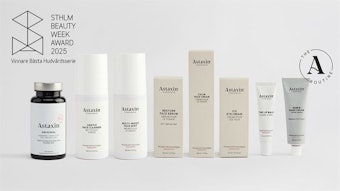
Sensitive skin is an uphill battle whether a client actually has sensitive skin or is misdiagnosing their skin type based on a reaction to a product. While properly diagnosing sensitive skin is a key factor in the proper treatment of rebuilding and strengthening the skin, another good place to start when treating sensitive skin is the ingredients. In fact, avoiding certain ingredients in skin care products can help treat clients who are dealing with reactive skin and not necessarily sensitive skin. Here is a list of ingredients to keep in mind when choosing products for clients with sensitive skin.
Minty/Citrus Essential Oils
While this is often a natural ingredient in products, it can still cause irritation in the skin when mixed into products. In particular, clients should avoid essential oils that have a minty or citrus smell to them. Essential oils can contain allergens like isoeugenol, farnesol, linalool, citronellol, benzoyl benzoate,lLimonene, hexyl cinnamal and hydroxyisohexyl 3-cyclohexene carboxaldehyde.1
Apart from the allergens, many essential oils are highly concentrated, In some cases, this concentration can trigger a reaction in a client's skin.2
Specific Sulfates
Sulfates are a busy bee of skin care, but their uncanny ability to remove dirt and oil from the scap and skin can make them irritating for sensitive skin. Specifically, sodium laurlyl sulfate (SLS) and sodium laureth sulfate (SLES), can strip natural oils from the skin, which can leave it feeling dry and itchy.3
These sulfates are often found as foaming agents. The most common type of product you might see these foaming ingredients in would be cleansers.1,4
Methylisothiazolinone
Methylisothiazolinone (MIT) is a common preservative that can be included in a lot of products to help prevent microbial growth.4 However, many people can be allergic to this specific preservative, meaning it can irritate both sensitive and reactive skin types equally. St. John's Institute of Dermatology in London even highlighted how 10% of patients with skin conditions tested positive to being allergic to this preservative.1 Importantly, the concentration of MIT is controlled by regulatory bodies both in the E.U. and the U.S., and formulators are not allowed to use amounts high enough to cause significant irritation.
Dyes
This may seem like a slightly more obvious ingredient, but it can often go unnoticed or misunderstood by clients. Dyes are used to disguise the color of ingredients that may not be appealing to the eye. However, making a product look more appealing is really where the benefits for these ingredients stop, especially for sensitive skin. Dyes to look out for and avoid include D&C Yellow #11, FD&C Blue #1 and FD&C Yellow #5, or tartrazine.4
Chemical Sunscreen
Everyone needs to protect their skin from the sun. Clients with sensitive skin should be educated to understand what sun-safe products work for sensitive skin. Physical sunscreen ingredients include zinc oxide and titanium dioxide in comparison to the numerous active ingredients that are often included in chemical sunscreens.5
Promote the use of physical sunscreen versus chemical sunscreen as well as reading the label of sunscreens with clients. Oftentimes, chemical sunscreens will include fragrances and dyes, which further upset sensitive skin as well as chemicals like avobenzone, octisalate, oxybenzone and homosalate. These can cause the skin to feel more dry, irritated and itchy.3
Fragrance
This last ingredient is another more obvious one that can go easily unnoticed, as it makes a product more appealing. The tricky part about fragrances is that they do not actually list the chemicals used in the fragrance on the ingredient label, but instead they will be simply labeled as "fragrance."3
These fragrances could include numerous chemicals. Also, clarify the difference between unscented products and products that are fragrance-free, as fragrance-free clarifies that there are no artificial fragrances added to the product.3
While it can be difficult to avoid every ingredient that could possibly cause a reaction, it is not impossible. It is best to keep clients well educated on what ingredients will most likely irritate their skin. This is just the beginning to helping them understand proper home care, which will aid in the overall process of treating their skin.
References
- https://www.getthegloss.com/article/sense-and-sensitivity-ingredients-to-avoid-in-make-up-and-skincare
- http://www.honestyforyourskin.co.uk/which-essential-oils-to-absolutely-avoid-if-you-have-sensitive-skin/
- https://www.genevanaturals.com/blogs/geneva-naturals/ingredients-to-avoid-if-you-have-sensitive-skin
- https://www.psico.com/sensitive-skin-care/chemical-irritants/
- https://www.skininc.com/treatments/suncare/Recommending-Sun-Protection-for-Sensitive-Skin-302921221.html










